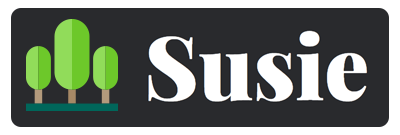Hacking Sustainability

Green software procurement
By Valentijn van de Beek, Merlijn Mac Gillavry, Leon de Klerk, Joey de Water.
Green IT has become an increasingly relevant and impactful topic in the domain of Software Engineering. Nowadays, software not only needs to be efficient, but also sustainable. In a world where energy and resources used in computers are becoming more scarce and where climate change is one of the most pressing issues facing our species, research …
Paper.Source code.
A web app for understanding energy metrics
By Rutger Doting, Nils van den Honert, Zeger Mouw.
There are plenty of tools that can convert between different units of measurement, but none that demonstrate the context of what this unit of measurement means. Therefore, we have built a web app for that purpose.
Paper.
Website.
Source code.
![]()
Carbon Tracker Chrome Extensiont
By Elias Stenhede Johansson, Gustav Leth-Espensen, Florian Ecker-Eckhofen, Gustav Emil Nobert.
This project created a Chrome extension to track carbon emission when visiting websites.
Paper.Source code.
Ticket to Sustainability: A Board Game About Sustainable Software Engineering
By Otto Kaaij, Sara Op den Orth, Cathrine Paulsen, Michelle Schifferstein.
Ticket to Sustainability is a board game extension for Ticket to Ride that teaches developers about environmentally sustainable software engineering practices for a variety of areas within computer science. It is both informative and discussion-promoting in nature.
Paper.Source code.
Food Carbon Emission Extension
By Louise Leibbrandt, Nienke Nijkamp, Gaspar Rocha, George Vegelien.
People are aware that their diet has an ecological impact, but taking action is difficult. We offer a tool that provides consumers with information on the carbon footprint of the food they purchase.
Paper.Source code.

GATorch: An Energy-Aware PyTorch Extension
By Rover van der Noort, Dajt Mullaj, Martijn Smits, Remy Duijsens.
GATorch is a tool seamlessly integrated with PyTorch that enables ML
developers to generate an energy consumption report. By attaching your
model, the tool automatically tracks the energy consumption of your
model’s training and generates graphs and plots to gain in-depth
insights into the energy consumption of your model.
Paper.Source code.
VS Code Power Measurement: A VS Code Extension for Measuring Power Consumption
By Ole Peder Brandtzæg, Aaron van Diepen, Rolf Piepenbrink & Jasper Teunissen.
This paper presents a VS Code extension utilising the energy consumption metrology agent Scaphandre in order to bring power measurements into the IDE.
Paper.Source code.

Susie 🤖 - Auditor for GitHub repositories
By Philippe de Bekker, Merel Steenbergen, Sebastien van Tiggele, Ivor Zagorac.
Susie is an open-source platform aimed at Sustainable Software Development, featuring an Analysis Tool 🔍 (sustainability of a GitHub repository) and Guides 📰 (interesting related topics).
Paper.
Website.
Source code.

Title of the project
By Student1 first and last name, Student2, Student3.
This is a summary with a max of 200 characters; Lorem ipsum dolor sit amet, consectetur adipisicing elit, dos eiusmod tempor incididunt ut labore et dolore magna aliqua. Ut enim ad minim veniam, quis.
Paper.
Website.
Source code.
How to contribute
To add a new article, follow the instructions below:
- Fork the repo of the website on Github: https://github.com/luiscruz/course_sustainableSE/
- Create a new markdown file inside the directory
2023/p2_hacking_sustainability- Use the following filename format:
g<group_number>_<1/2meaningful_keywords>.md - Use the file
gX_template.mdhas a template - If you want to add images, add it to
2023/img/p2_hacking_sustainability/g<group_number>_<1/2meaningful_keywords>/
- Use the following filename format:
- Commit, Push.
- Submit a pull request.
Explaining the template. Although it is a markdown (.md) file, you will only be filling the YAML header with some keys and values. In particular, you must fill author, title, summary with a quick description of the project (max 200 characters), and paper with a url link to the paper. Optionally, you can also fill image with the url of a logo or image related to the project, source with a link to the source code of the project, and website with a link to the project’s website when applicable.
Before submitting the pull request, you should test whether your file is rendering properly in the website. The easiest way to check it is by running the docker container, as instructed in the Github Readme.
Your page should be listed here: http://localhost:4000/course_sustainableSE/2023/p2_hacking_sustainability
If you don’t want to deal with jekyll, you can do it the slow and expensive way: 1) enable github pages in your fork repo 2) check your the deployed page. (I don’t recommend it, though)
Note: let me know if you run into any issue or if there’s any step you think should be explained here.